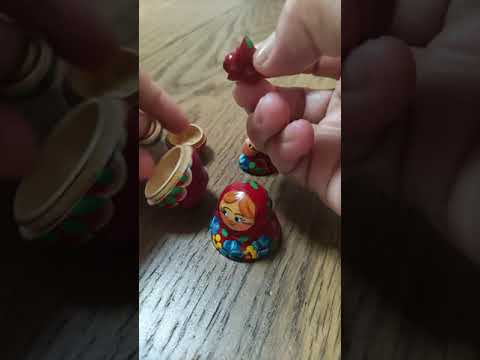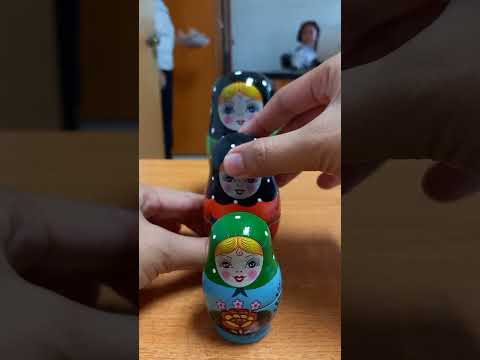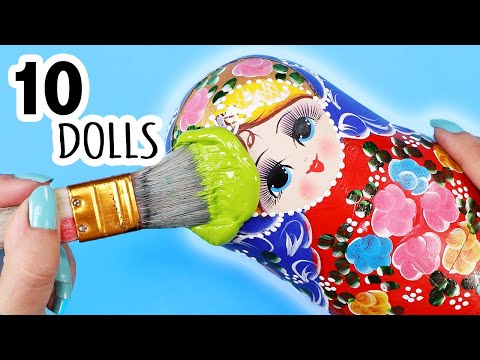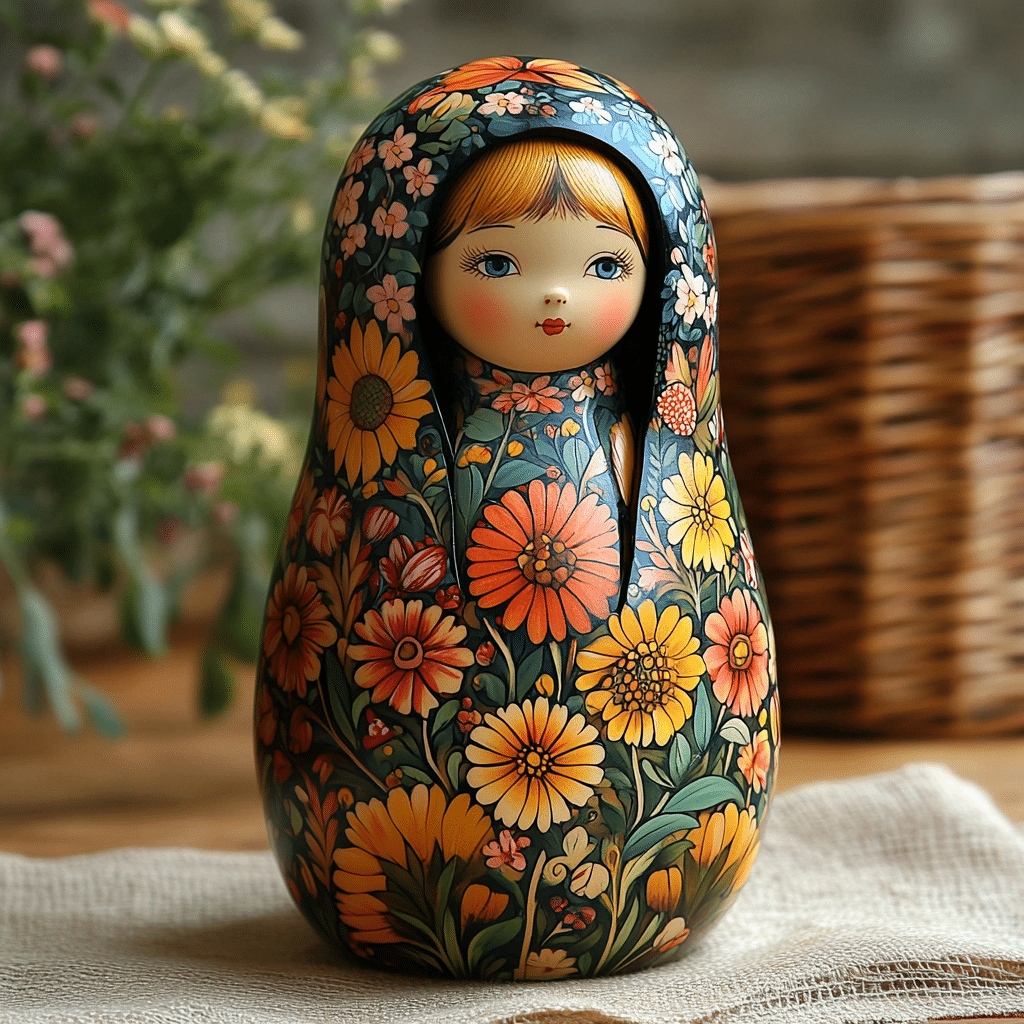
Matryoshka Dolls Symbolize Motherhood And Legacy
The matryoshka is more than just a colorful Russian nesting doll—it embodies deep cultural insights regarding motherhood, legacy, and the layers of familial bonds. Stemming from the Russian name “Matryona,” meaning “little mother,” the word matryoshka reflects not only the maternal presence in one’s life but also the generational connection woven through family narratives. Each matryoshka represents a layer of identity, echoing the stories and histories of women from various backgrounds, making them poignant symbols of empowerment and community.
These delightful wooden figures, often adorned with intricate designs, act as reminders of women’s roles in society throughout the ages. With each doll nestled within another, they symbolize how motherhood transcends generations, preserving family legacies that shape who we are today. Matryoshka dolls serve as a vibrant canvas representing the complexity of relationships: a mother nurturing her child, a daughter embracing her heritage, and a lineage rooted in love and continuity.
More than mere decorative objects, matryoshka dolls illustrate a cultural narrative of resilience, resilience that has been celebrated and adapted across various artistic forms, making them a powerful symbol both in Russia and globally. They inspire conversation about the essence of womanhood and the vital roles women play in nurturing future generations. By honoring the legacy of matryoshka, we reflect on the broader themes of motherhood and family that resonate across cultures.
The Evolution of the Matryoshka: Historical Context and Modern Interpretations
Delving into the roots of the matryoshka reveals a fascinating evolution that mirrors the changing landscape of artistic expression. Originating in the late 19th century in Russia, these dolls drew inspiration from Japanese stacking dolls. The first known matryoshka was crafted by Sergey Malyutin and carved at the Abramtsevo Colony in 1890. Over time, the matryoshka evolved beyond its whimsical design, becoming a profound cultural symbol deeply intertwined with Russian identity.
As we venture into the modern era, contemporary artists are reimagining traditional forms of the matryoshka. Maria Sokolova stands out in the art scene with her innovative takes that address pressing social issues. Sokolova’s matryoshka designs often delve into themes of environmentalism and mental health, showcasing how this age-old craft can convey contemporary narratives. These modern interpretations challenge the notion of matryoshka dolls as mere relics of the past, instead transforming them into platforms for dialogue about urgent matters of our time.
Another notable artist is Ekaterina Tikhonova, who incorporates matryoshka elements in her installations. Tikhonova shines a light on women’s empowerment through her work, utilizing the symbolic nature of the dolls to explore gender roles and identity. By enriching the conversation around matryoshka, these artists highlight how this traditional craft can bridge cultural gaps, speak to modern issues, and inspire a new generation of thinkers and creators.
Notable Matryoshka Artists and Their Works
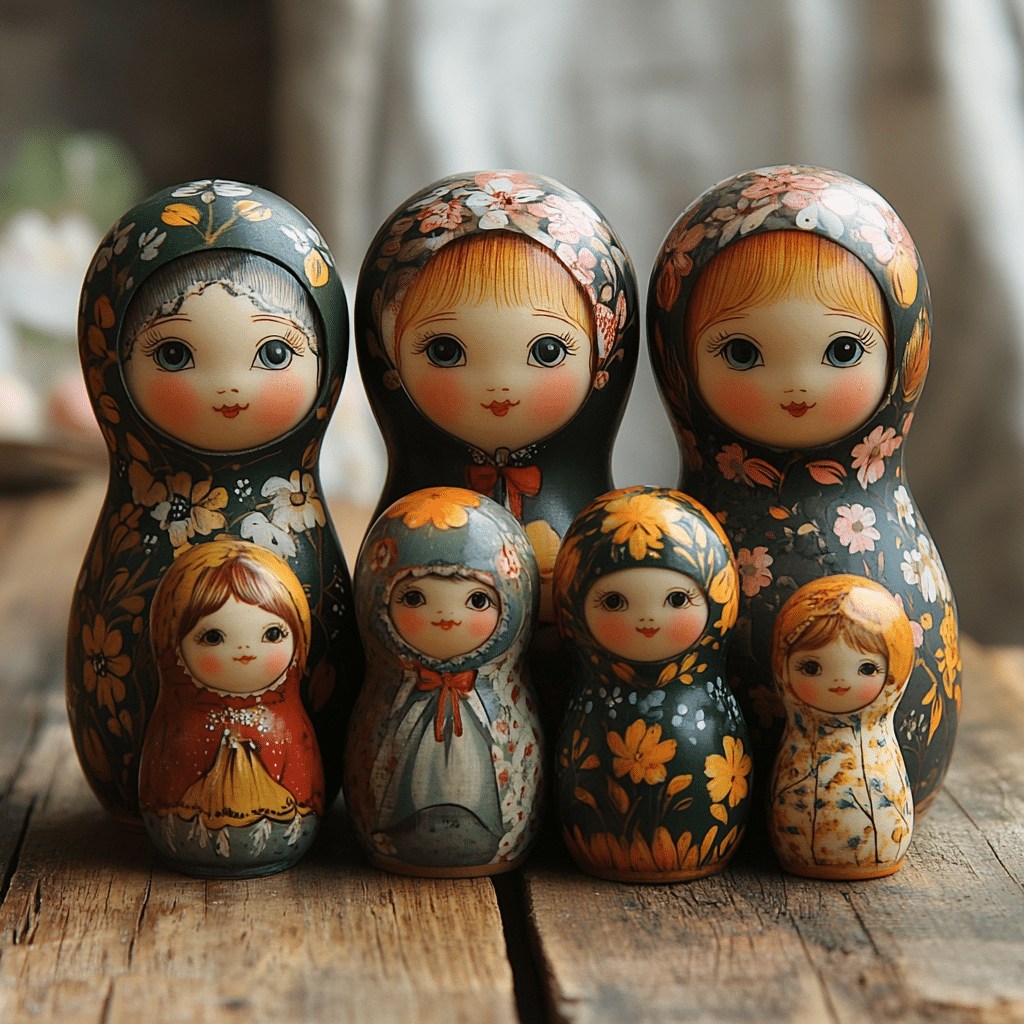
Matryoshka in Pop Culture: A Symbol of Resilience
From the silver screen to contemporary literature, the matryoshka has made noteworthy appearances, symbolizing resilience and complexity. A standout example is the film “The Brothers Bloom,” where matryoshka dolls represent layered narratives and the intricate histories of characters. Each doll serves as a metaphor for personal growth, choices made, and the hidden truths that lie within.
The symbolic depth of matryoshka expands further in like works, highlighting themes of deception and revelation. Characters grapple with their pasts, much like how each nesting doll carries its own story. This creative representation showcases the relevance of matryoshka in modern storytelling, demonstrating how art can transcend boundaries and tackle the intricacies of human experience.
Matryoshka dolls resonate beyond film; they appear in advertising and branding, underscoring the universal themes they embody. Brands use matryoshka imagery to communicate the idea of nested values, where each layer contributes to a greater whole. This creative application highlights the dolls’ versatility and ability to inspire relatable messaging across different fields.
Iconic Figures Associated with Matryoshka: From Ruslana Korshunova to Oleksandr Usyk
Certain personalities evoke the symbolic nature of matryoshka dolls within our cultural landscape. Ruslana Korshunova, the late Kazakhstani model, embodied the layers of beauty, struggle, and societal expectations. Her vibrant life and tragic passing reflect the complexities of modern womanhood—the very essence of what matryoshka represents. Corshunova’s legacy, rich in authenticity yet marked by adversity, mirrors the intricate stories encapsulated within each doll.
On the more resilient side, Oleksandr Usyk stands as a hallmark of strength and perseverance. The Ukrainian boxer not only showcases physical prowess but challenges traditional notions of masculinity in sports. Usyk’s journey, culminating in multiple heavyweight championship titles, illustrates the evolution of legacy—a layered narrative much like that of matryoshka dolls. His embodiment of determination exemplifies how both athletes and artists can navigate personal and public expectations while carrying their heritage.
These figures highlight how matryoshka dolls can symbolize nuanced stories about identity, resilience, and the deeply woven threads of legacy that connect us all. In exploring their narratives, we understand that every layer of the matryoshka reflects the diverse experiences and struggles inherent in being human.
Influential Personalities
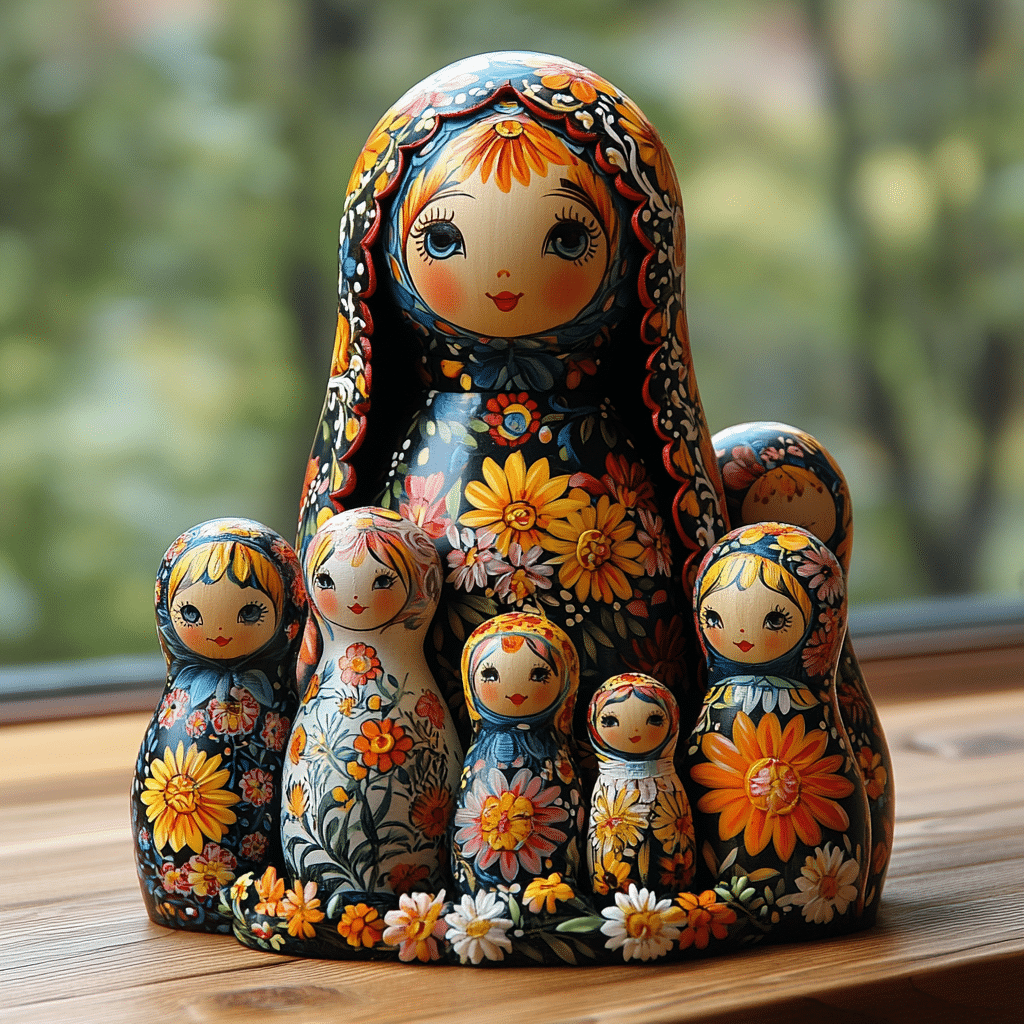
The Art of the Perevodchik: Translating Cultural Significance
The term perevodchik, which translates to “translator,” encompasses more than just linguistic conversion. It refers to the intricate unpacking of cultural significance behind symbols like the matryoshka. The multidimensional layers of meaning strung within these dolls invite interpretation across different cultures, highlighting how they resonate uniquely in varied contexts.
In Western societies, matryoshka dolls are often represented as whimsical collectibles or art pieces, neglecting deeper familial ties and generational storytelling. In contrast, within Russia, matryoshka are integral to cultural identity, symbolizing the connectedness of family and tradition. As such, understanding and interpreting these cultural nuances is vital, particularly for newcomers to the art form.
Furthermore, cross-cultural exhibitions have shed light on the role of matryoshka in international storytelling. Collaborative projects between artists of different backgrounds emphasize the interconnectedness of human experiences and values through the lens of matryoshka. These initiatives celebrate how art can transcend borders, strengthen cultural ties, and inspire empathy among different communities.
Cultural Interpretations
Revisiting the Matryoshka Narrative
The matryoshka doll continues to emerge as a powerful representation of motherhood, legacy, and identity. Each layer peeled back reveals insights into the connection between women, families, and the cultural narratives that shape our societies. Through stories of influential figures like Ruslana Korshunova and Oleksandr Usyk, we can appreciate how matryoshka embodies layers of experience that reflect our own lives.
Furthermore, modern artistic interpretations expand the dialogue around femininity, identity, and the broader human experience. No longer merely whimsical decor, matryoshka dolls invite deeper contemplation about the legacies we inherit and pass down. They compel us to cherish our familial bonds and examine our identities within a larger historical context.
As we celebrate matryoshka dolls, we recognize their potential to inspire reflection on touching themes of motherhood, legacy, and resilience. Their enduring cultural significance and adaptability ensure that future generations will continue to connect with their stories. The matryoshka remains a profound symbol, encouraging us to unearth our past, appreciate our present, and forge meaningful connections that transcend time.
Matryoshka: A Reflection of Motherhood and Legacy
The Origins of Matryoshka Dolls
Matryoshka dolls, or Russian nesting dolls, have an interesting backstory that dates back to the late 19th century. Crafted by skilled artisans, these intricate dolls symbolize motherhood and legacy through their stacked design, with each doll representing a generation. Fun fact: the earliest known matryoshka was created in 1890 by Sergey Malyutin, who was inspired by a Japanese nesting doll. Isn’t it amusing how this tradition has stretched across continents? The designs have expanded far beyond their origins, influencing even contemporary art forms. Some have even embraced playful variations like the porn choke, giving a humorous twist to a classic symbol.
Cultural Significance and Modern Influence
Matryoshka dolls don’t just represent family ties; they tell stories of culture and history. From royal themes to pop culture figures, they celebrate Russian heritage while adapting to modern tastes. Notably, one fascinating example is Jessica Paré, who was featured in a popular series and inspired a line of collectible matryoshka dolls designed after her character. It’s wild how these once-simple toys have journeyed into mainstream media, capturing the imagination of fans everywhere. We’ve also seen dolls depicting characters like Theon Greyjoy, merging traditional craftsmanship with modern storytelling.
Fun Facts and Trivia
In the spirit of all things matryoshka, did you know that the largest matryoshka in the world measures a whopping 18 feet? That’s a big doll! Meanwhile, the tallest man in the world, Sun Mingming, stands just as tall as the stack of basic matryoshka dolls. It’s fun to think about how these stacked wonders symbolize not just familial ties, but a playful reflection of our society, balancing the serious and the silly. And if you’re ever curious about the intricacies of the crafting process, it wouldn’t hurt to read up more on platforms that provide insights into artistic legacies, like the site that features Alexander Goulding. Each matryoshka remains a reminder of the importance of family and heritage in our fast-paced lives. So next time you spot one, remember it’s more than just a doll; it’s a layered narrative waiting to be explored!
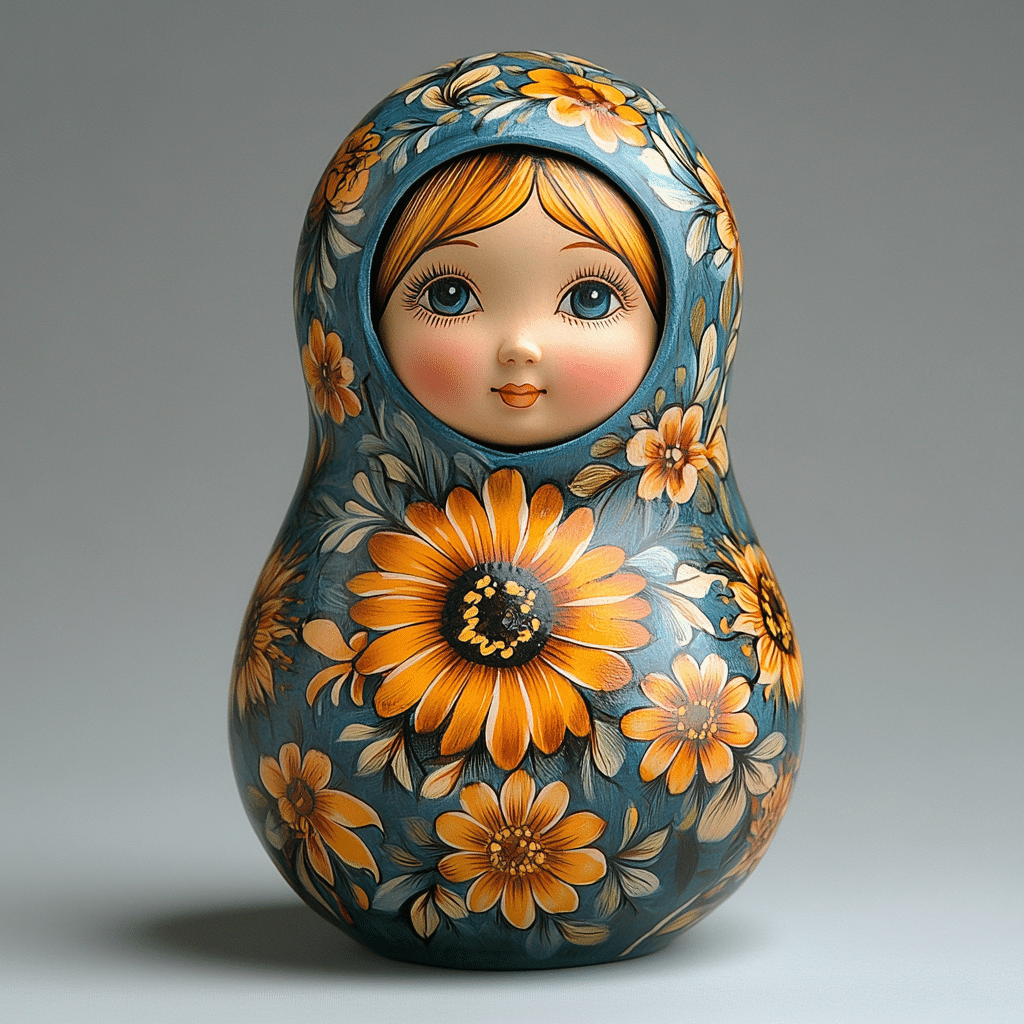
What does matryoshka mean in Russian?
Matryoshka means “little mother” in Russian, coming from the name Matryona, which relates to the word for mother, “mat'”.
Is it matryoshka or babushka?
It’s matryoshka when it refers to nesting dolls; babushka specifically means grandmother in Russian.
What do Matryoshka dolls symbolize?
Matryoshka dolls symbolize motherhood, family legacy, and the connection between generations, illustrating a mother carrying a child and the unity of various aspects of life.
How do you pronounce matryoshka in Russian?
In Russian, matryoshka is pronounced mah-tree-OH-shkah, with the emphasis on the “O”.
What’s the point of Russian nesting dolls?
Russian nesting dolls serve as a fun and artistic way to represent layered concepts, such as family connections, diversity, and unity, by nesting one doll inside another.
What is mamushka in Russian?
Mamushka means “mommy” in Russian, and it conveys an affectionate term for mother.
Are matryoshka dolls Russian or Ukrainian?
Matryoshka dolls are traditionally Russian, although they have gained popularity in other cultures, including Ukraine.
What gender is babushka?
Babushka, meaning grandmother, is a feminine noun.
What does the nesting doll tattoo mean?
The nesting doll tattoo often represents family bonds, motherhood, and the idea of embracing one’s heritage or inner self.
What is the Russian doll a metaphor for?
The Russian doll serves as a metaphor for the layers of identity and the complexity of relationships, illustrating how each layer contributes to the whole.
How many Matryoshka dolls in a set?
A typical set of Matryoshka dolls can contain anywhere from five to ten dolls, with some sets featuring even more.
How to tell authentic Russian nesting dolls?
To tell if a Russian nesting doll is authentic, look for hand-painted details, quality craftsmanship, and that the dolls fit neatly within one another.
How do you pronounce Mishka in Russian?
Mishka is pronounced MEESH-kah in Russian, and it’s a cute term for a bear or can refer to a teddy bear.
How old are matryoshka dolls?
Matryoshka dolls originated in the late 19th century, so they’re over a hundred years old, with their design evolving since then.
What is the proper name for a babushka doll?
The proper name for a babushka doll is matryoshka, as “babushka” is used more for the term “grandmother”.
Are Matryoshka dolls Russian or Ukrainian?
They are predominantly Russian, although both cultures claim versions of nesting dolls.
What does the Russian nesting doll tattoo mean?
The Russian nesting doll tattoo often represents the importance of family, heritage, and the connections between people.
What is a Russian doll called in Russian?
In Russian, a Russian doll is referred to as “матрешка” pronounced as “matryoshka”.
What is the symbol of the Russian culture?
The symbol of Russian culture is often represented by matryoshka dolls, which embody family ties and the idea of unity in diversity.





